UIW Guatemala Solidarity, May 2023, v. 4
History and the Importance of Solidarity with the Indigenous
“We are on a journey and the U.N. Sustainable Development Goals are guiding us.”
University of the Incarnate Word Nutrition majors, Vallery Roberts and Shania Salinas, and Elementary Education majors, Amil Bettencourt, Carley Petru, and Aislinn Villarreal, and two faculty members Sister Martha Ann Kirk and Dr. Beth Senne-Duff, assisted by Mr. Mark Duff who is fluent in Spanish, worked and learned with Edwin Mendoza and Darlene Jasso, former UIW students serving where there are great needs among the indigenous in Guatemala. They founded the Little Angels of Mary to promote nutrition and literacy. Guatemala has the 6th highest rate of chronic malnutrition in the world. Forty-eight percent of all children under 5 years old are malnourished.
After three newsletters of the activities of the group building gardens, teaching nutrition, and assisting preschool students and their mothers, this news presents some of the historical background which the group learned and why it is important to be in solidarity with the indigenous in Guatemala. On October 4, 2023, the University of the Incarnate Word Lewis Center of the Americas will host the first indigenous person in the world to be awarded a Nobel Peace Prize. Rigoberta Menchú, a Guatemalan woman, was held up as a role model and teacher for the world in 1992 and she has continued to speak and work for justice. Pope Paul VI said, “If you want peace, work for justice.” The Solidarity Trip group moved among her people to learn, build relationships, and hopefully co-create a more just world. The Incarnate Word Sisters’ Constitution speaks of the importance of the “promotion of human dignity” and UIW is motivated by that idea of its founders.
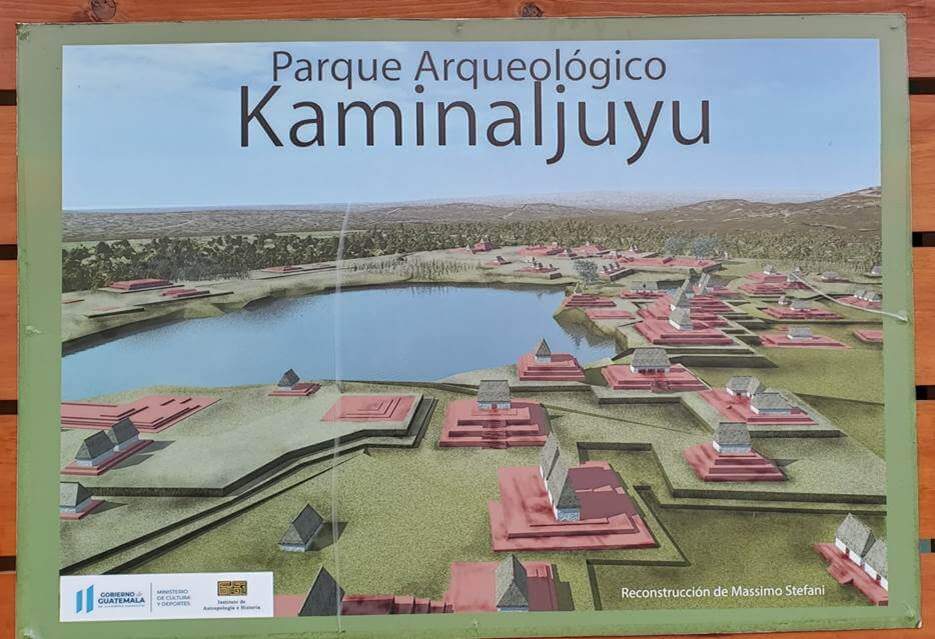
On the first full day in Guatemala City, the group visited Kaminaljuyú, an archeological park, that was one of earliest and most important sites of the Mayan people. While the Acropolis is from about 1500 years ago below that are stones from the Preclassic Period 2000 years ago. About the same time that Jesus lived and walked around Jerusalem, people were developing a city at the crossroads of trade routes. The area prospered because of abundant deposits of obsidian, a strong glass like stone valuable for tools. Obsidian from Kaminaljuyú has been found thousands of miles away indicating that it was traded extensively. Ruth, the guide emphasized that the area had leaders who drew the people to work together, it was not a kingdom or empire that forced subjection.
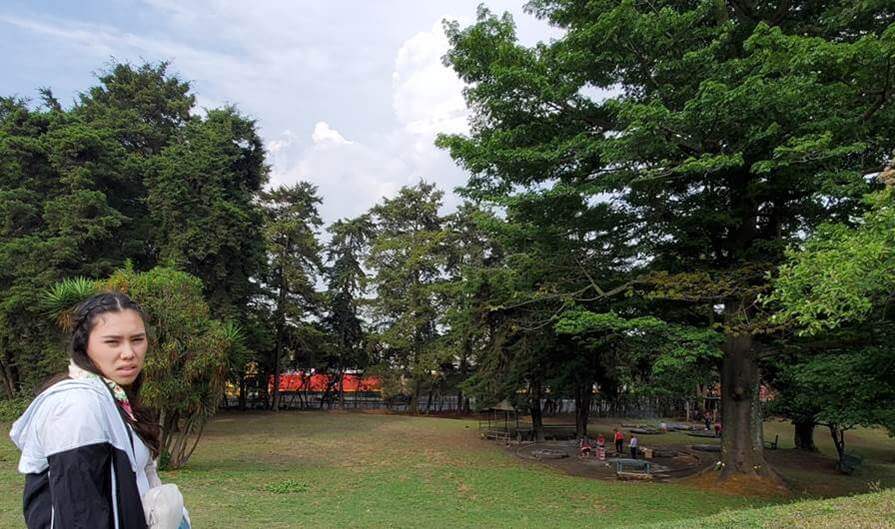
While Christianity is the primary religion of Guatemala, many people are grounded in ancient spiritualities respecting nature and living in gratitude. People go to the area around this sacred tree, to make offerings, and to pray. Ruth, the guide, spoke of a couple who went to the area each month and prayed for a child. Now they return each month and pray in gratitude for their healthy child.
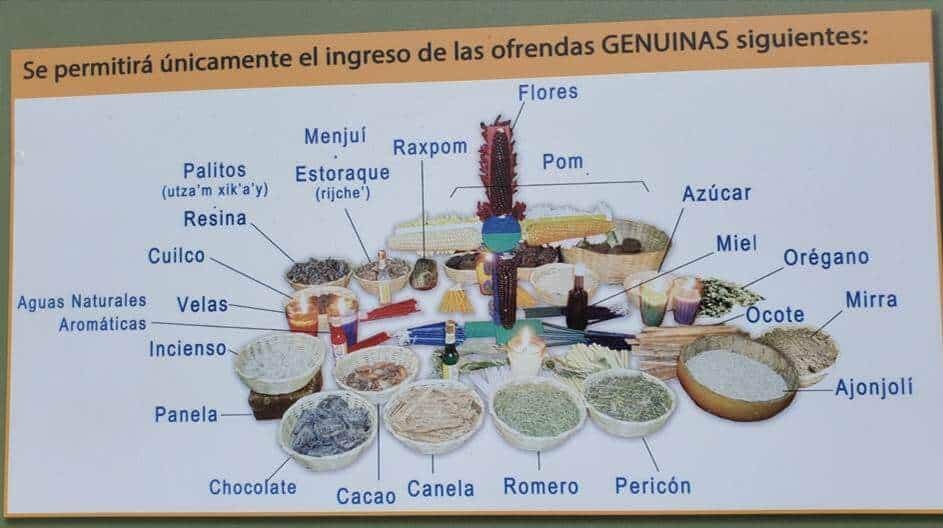
At the entrance to the park a sign lets people know the types of things allowed as offerings, such as corn, sugar, honey, oregano, rosemary, incense, chocolate, cinnamon. All over Guatemala examples of fine Mayan city planning, architecture, and art can be found. Archeology indicates that areas were abandoned. Sometimes that seemed to be linked with drought. A recent study is suggesting, in the midst of climate change today, wisdom could be learned from the Mayans.
The UIW group also visited the Casa de la Memoria. The museum, which began in 2018 proclaims, “A people who cannot remember their history, are doomed to repeat it.” orge, a student whose family had been traumatized by the violence from the internal armed conflict, was serving as a volunteer guide. Over 200,000 people, mostly indigenous and poor, were killed from 1960 to 1996. Both his knowledge and his passionate care spoke to the group.
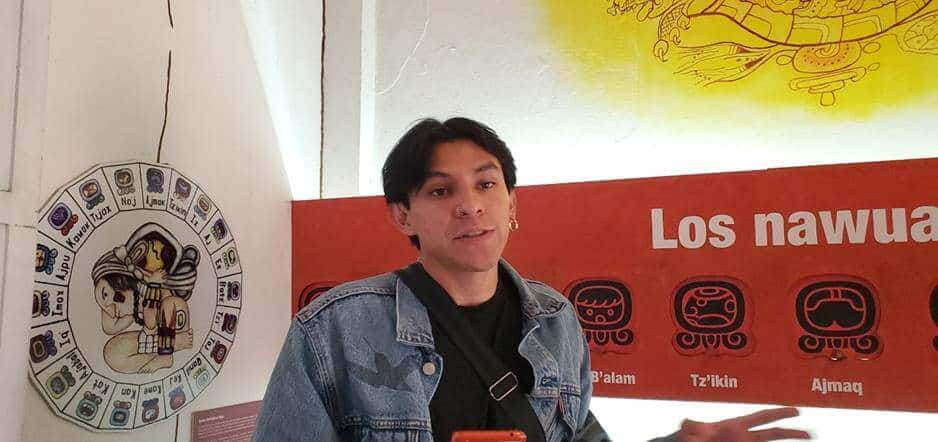
The first room, the Mayan Civilization room, shows texts and objects revealing the people’s respect for mother earth, the animals, and nature around them. Corn was a main food. They developed a calendar, astronomy, and mathematics. The Mayan calendar helped people know when to plant crops.
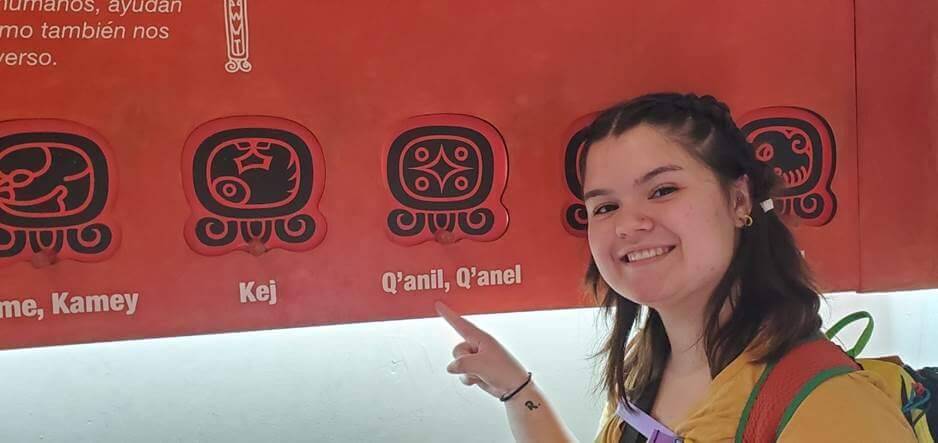
The group enjoyed learning about the calendar and opening the window to the month when one was born. The Mayans excelled in sculpture and architecture. The room had an enclosed circle of pictures hiding some history. When one took time to open this, there was the HISTORY OF THE WOMEN. This clever way of having an exhibit spoke of the sad reality of women’s history not being valued.

Mayan texts tell stories of a highly developed civilization. What happened?
Spaniards invaded Guatemala in 1519 not long after the conquest of Mexico. Europeans used the Doctrine of Discovery to justify their greed and lack of respect for the original peoples of the Americas. “The Doctrine of Discovery established a religious, political, and legal justification for colonization and seizure of land not inhabited by Christians.” While the beginnings of this approach can be found in Catholic church documents going back to the 1100’s, the statement in 1493 from Pope Alexander VI “Inter Caetera” in 1493 was particularly important in giving justification to Christian European explorers’ claims on land and waterways in Africa, Asia, Australia, New Zealand, and the Americas. Because native people were not Christian, they did not have human dignity and human rights. They were more like the animals living on the land.
This should not be thought of as a uniquely Catholics approach because the idea of the Doctrine of Discovery was behind the U.S. Monroe Doctrine of the 1800’s justifying westward expansion and the U.S. takeover of the lands of Native peoples.
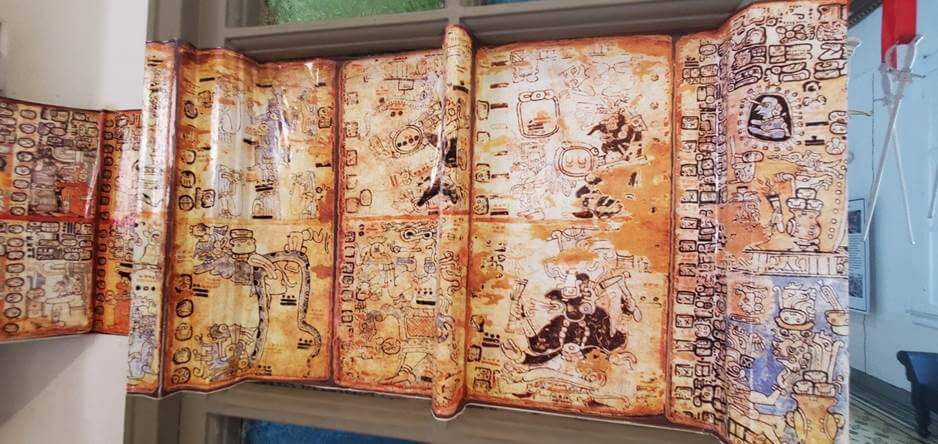
As one walked into the second room, Invasion and Dispossession, swords like those of the conquistadores, hung from the ceiling. In the center was a painting of fire burning the texts of people, trying to destroy their wisdom and their history. On the far side of the room hung ropes indicating that thousands were hung and copies of the drawings of this cruelty were displayed on the wall behind the nooses.
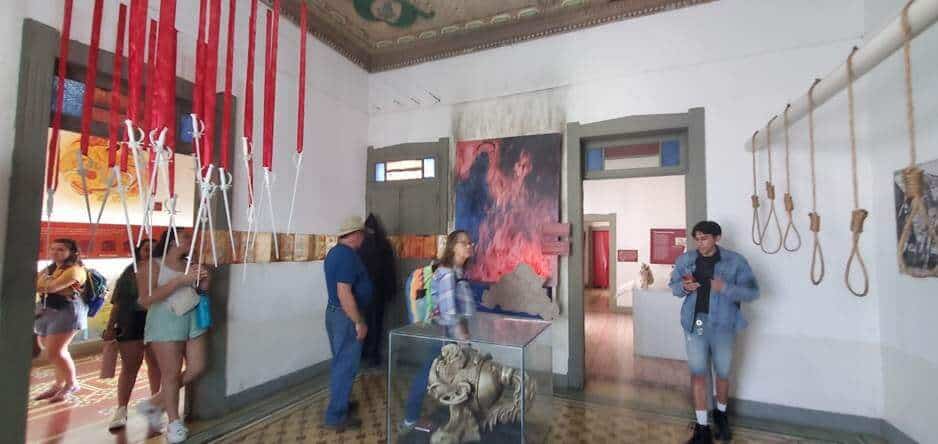
The advances of the Mayan civilization were violently interrupted killing thousands of indigenous people, raping women, burning their texts, and taking their lands. Again, women’s history was hidden.
The third room, Colonialization and “Independence?” had a scale that was not balanced. One side of the scale had indigenous people and the other Spanish invaders and their descendants, among them a church leader. Darker people were supposed to be the laborers.
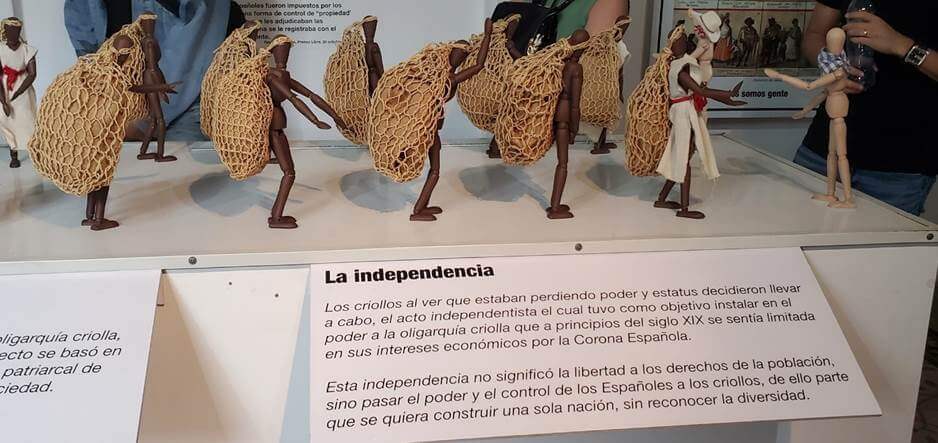
The Creoles, those of mixed descendance declared independence from Spain in 1821, but were still tied by economic dependence. The indigenous people and women still did not have equal rights.
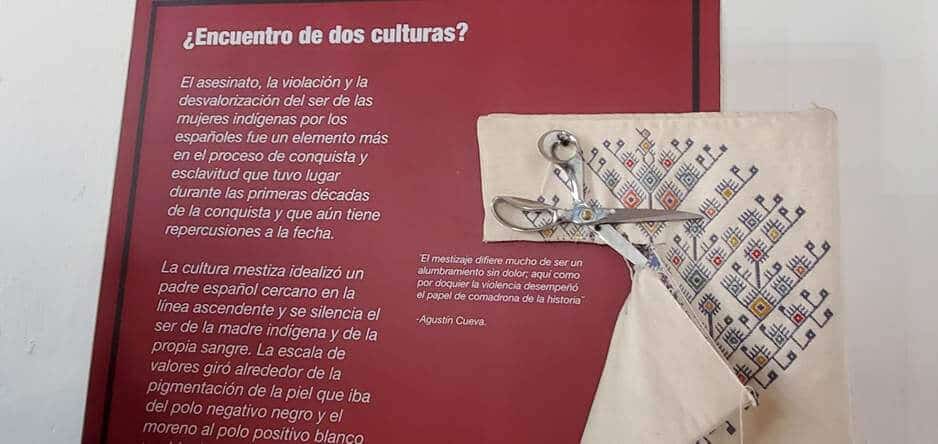
The meeting of two cultures?
The murder, rape and devaluation of women’s being was one more element in the process of conquest and slavery that took place during the first decades of the conquest and that still has repercussions today. The mestizo culture idolized a Spanish father and was silent about an indigenous mother in the blood line. The scale of values revolved around the pigmentation of the skin that went from the black negative pole and the tan to the white positive pole.
The fourth room, the Spring of Democracy, 1944-1954, was a revolution for advances for the people. Women got the right to vote. Guatemalan Social Security and the Código de Trabajo (Rights and Obligations or Owners and Workers) were begun.
Edwin Mendoza, a host of the UIW travelers, who is Guatemalan is a strong voice for the dignity of people, especially women and children, as can be seen in his work founding the Little Angels of Mary giving women education and opportunities.
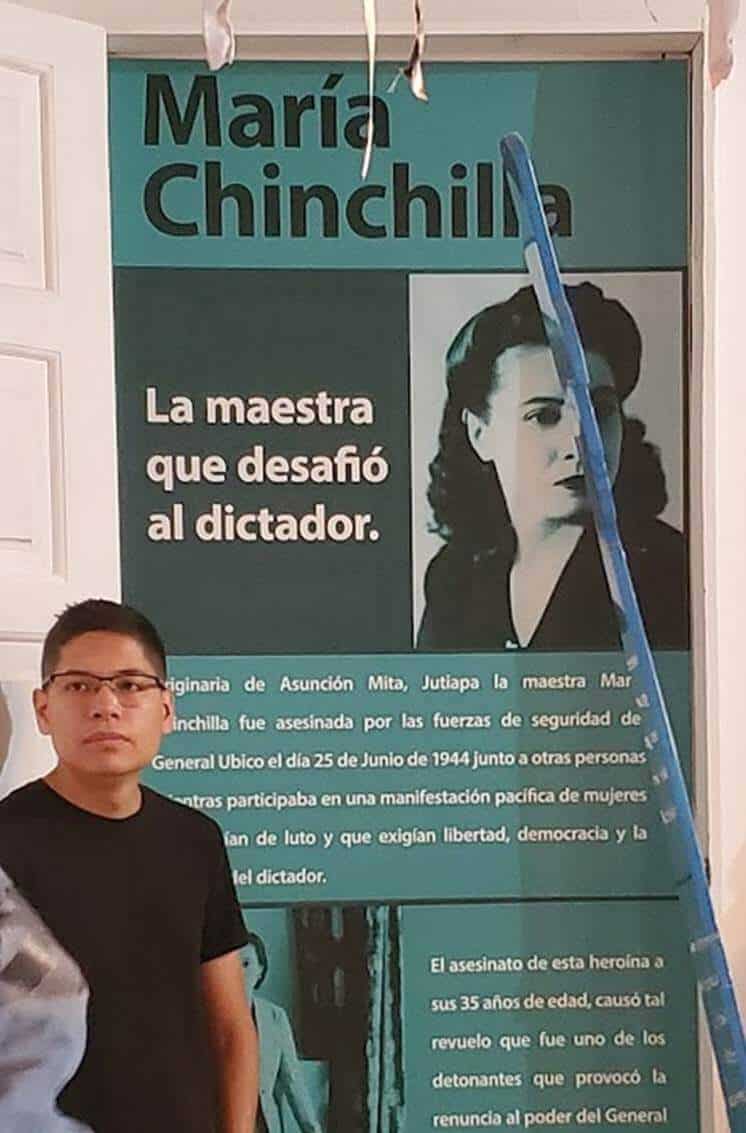
The fifth room, Against the Revolution, revealed the sudden and sad efforts to keep down the common people whose lives had been improving. The Guatemalan elites united with North Americans of power. The face of the US President Eisenhower appears in the center of this. Greed rather than the promotion of democracy was the dominant force of US foreign policy. Workers were exploited.

The sixth room, War and Genocide, revealed heartbreaking realities of the 36 years of armed internal conflict. The government used extreme violence against any who cried out for human rights. Villages were attacked. People fled seeking safety with thousands going north.
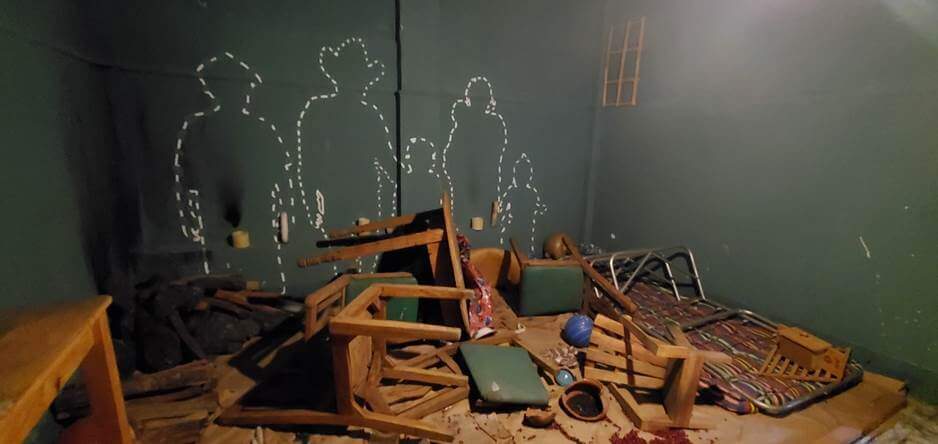
The Commission for Historical Clarification was established by the United Nations Oslo Agreement in 1994 to research the human rights violations and acts of violence linked to the armed conflict in Guatemala. The report was called “Guatemala: Memory of Silence.” The conclusion was that this had been genocide, a deliberate effort to destroy the indigenous people of Guatemala. The 1980’s were the bloodiest time and there was extensive sexual violence against women.

The stories told bring more and more pain, but finally there is the room of Solidarity and Resistance. People unite raising their voices. Whatever your religion, wherever you are from does not matter, the Communities of People in Resistance declare that people have the right to learn to read, to have medical care, to have respect, and to have human rights. The inequalities, especially in the rural areas must be overcome.
One of the Guatemalan women who was massacred in 1978 was Adelina Caal Maquin. She inspired refugees and they started an organization called Mama Maquin. The group wrote, “we realized that as Indigenous women we are discriminated against three times as much for being women, for being poor, and for being indigenous. We understood then that the work that waited for us was very big, but if we unite all of us we will be able to continue forward.”

The last museum room has space on the wall for visitors to write. What do we think of the past? How would we like to create the future?
In SOLIDARITY?
“You also are a protagonist in this history.”
Edwin led the group down the street about a block to a plaza in front of the Church of San Sebastian. As he grew up his father brought him to the Chapel of the Eternal Father by the church each Wednesday. Edwin served at the Mass there and they prayed together.
He told the tragic story of Bishop Gerardi who ministered at that church. Bishop Gerardi was a main person speaking for the human rights of the people during the period of armed internal conflict. He assisted with the report on human rights violations that revealed the most violence came from the government. Two days after it was released, he was assassinated by undercover government forces.
The group had seen his picture in the House of Memory:
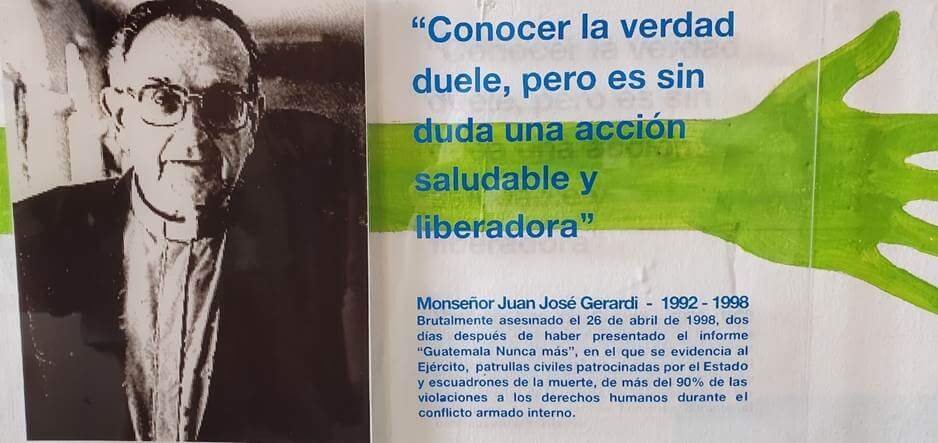
“Knowing the truth hurts, but it is undoubtedly a healthy and liberating action” Monsignor. Juan Jose Gerardi 1992-1998. Brutally assassinated on April 26, 1998, two days after presenting the report “Guatemala Never Again”, in which the evidence pointed to the Army, civil patrols sponsored by the state and death squads, for more than 90% of the violations of human rights during the internal armed conflict.”
The UIW group was given hope by the words of Rigoberta Menchú and look forward to her visit to UIW, October 4, 2023.
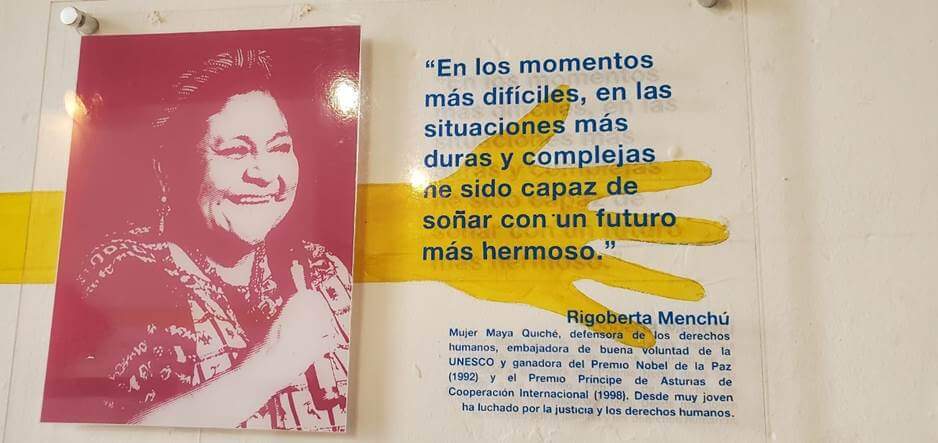
“In the most difficult moments, in the toughest and most complex situations, I have been able to dream of a more beautiful future.” Rigoberta Menchú.
Rigoberta Menchú, a Maya Quiche woman, human rights defender, UNESCO goodwill ambassador and winner of the 1992 Nobel Peace Prize and the 1998 Prince of Asturias Award for International Cooperation. Since her youth, she has fought for justice and human rights.
Beauty can also give hope and Guatemala is full of beauty in the natural landscape and also in the arts and crafts, especially the textiles. The UIW group visited the Museo Ixchel del Traje Indígena, an educational center for textiles and arts on the campus of Francisco Marroquin University.

One of the ways that resistance against colonialism and European dominance has been shown is in making and wearing traditional indigenous clothing. Women have been the weavers. Different styles of textiles identify the different areas.

After being in the textile museum, students got quite excited when they went to have dinner in homes in the indigenous village of Tecpán and discovered their hostesses weaving and embroidering beautiful things like those in the museum.
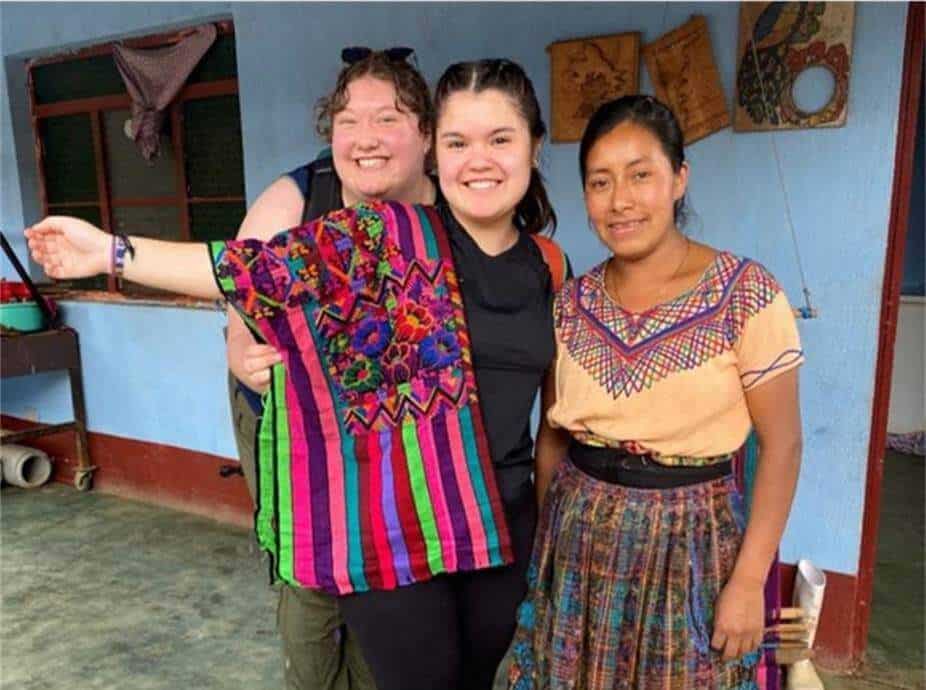
“Utz!”
“Good!” in Kaqchikel, the language of the villages where Darlene and Edwin have been working with the people. The Textile Museum had children’s books that have inspiration from Mayan culture. Darlene explained that Itla Vettorazzi, the author of these books, visited the school where she has been teaching. Nature is celebrated.
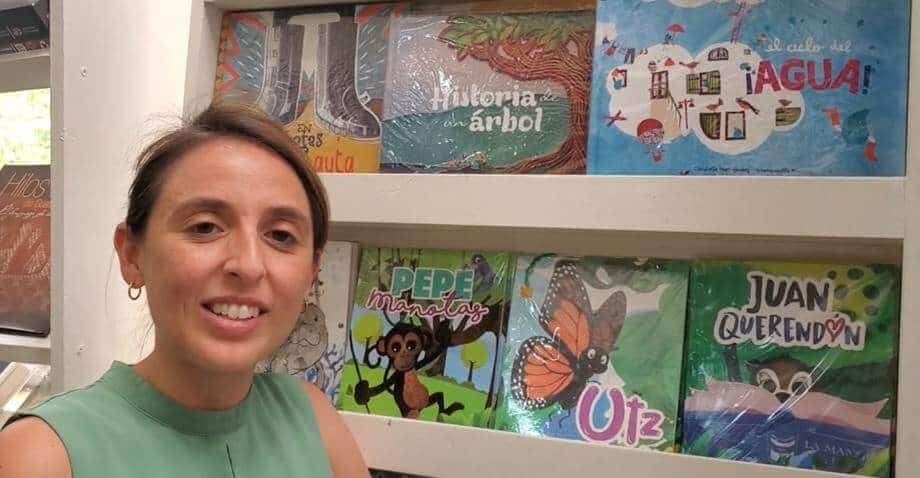
Not only do Darlene and Edwin build relationships with underprivileged women, but they endeavor to unite this work with evolving theologies. Edwin set up a conversation with two women theologians, Sr. Geraldina Céspedes Ulloa and Cinthia Méndez Motta, who had been professors at Universidad Rafael Landivar, the Jesuit University from which he graduated. They have been influential in defining women’s issues in theology in Central America and in organizing a women’s group in Guatemala which has conferences. Cinthia is a cofounder of Núcleo Mujeres y Teología. Recently Sr. Geraldina wrote a book: Ecofeminismo: Teología saludable para la tierra y sus habitantes.
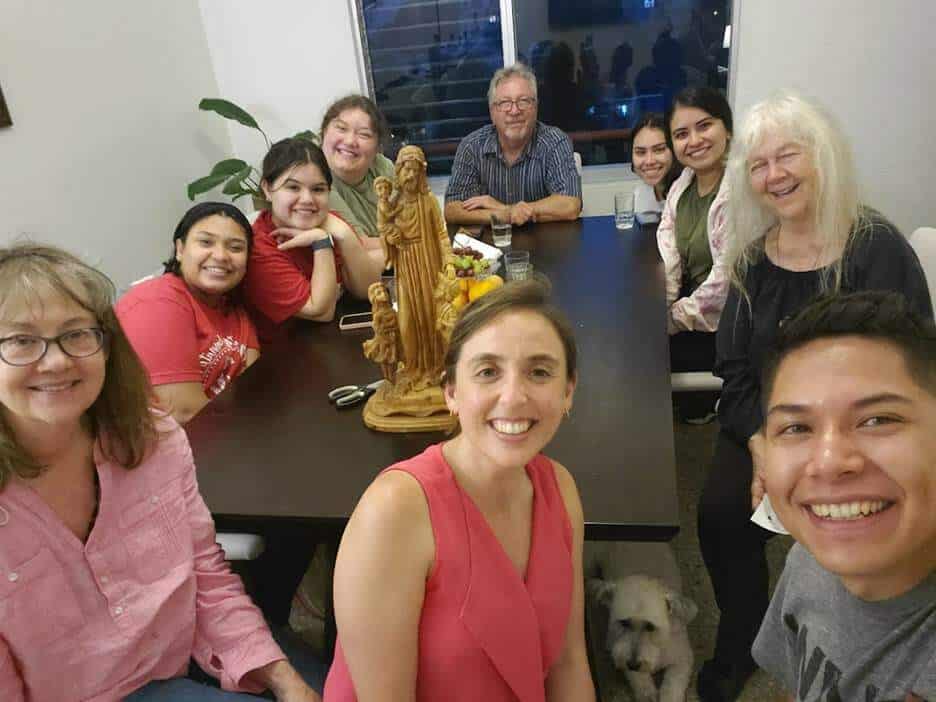
The UIW group gathered around a statue of Jesus called “Let the children come to me.” The gospel passage continues that children are the greatest in the reign of God. The children of the world are calling each of us to unite in compassion and to co-create a more just world.
To see Newsletters v. 1, 2, and 3 click here.
News compiled and shared by Incarnate Word Sister Martha Ann Kirk, Th.D., who has had the privilege of taking students and community members on solidarity trips since 1979. Assisted by Darlene Jasso, a UIW Communication Arts Graduate now serving as Vice-President for Communications for the Little Angels of Mary. See some of the work of the Little Angels of Mary here.

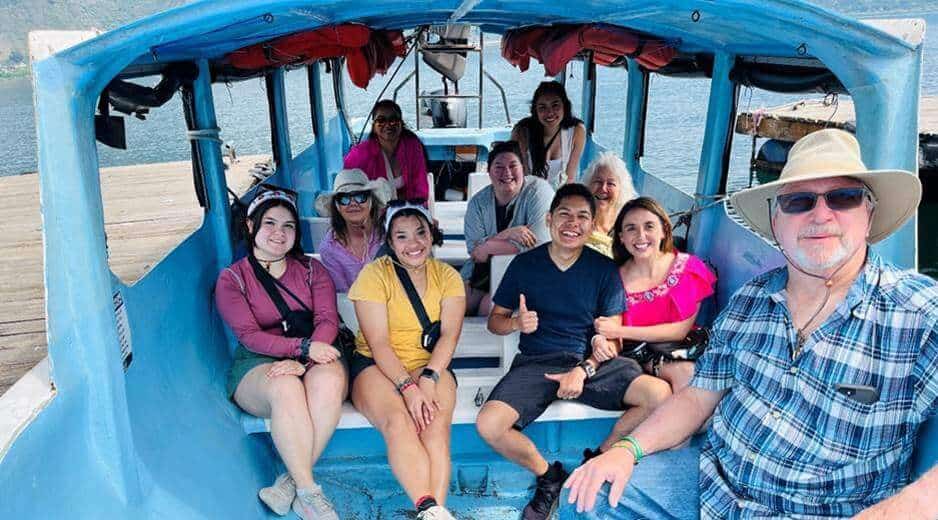

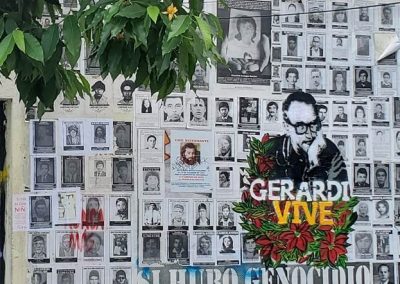
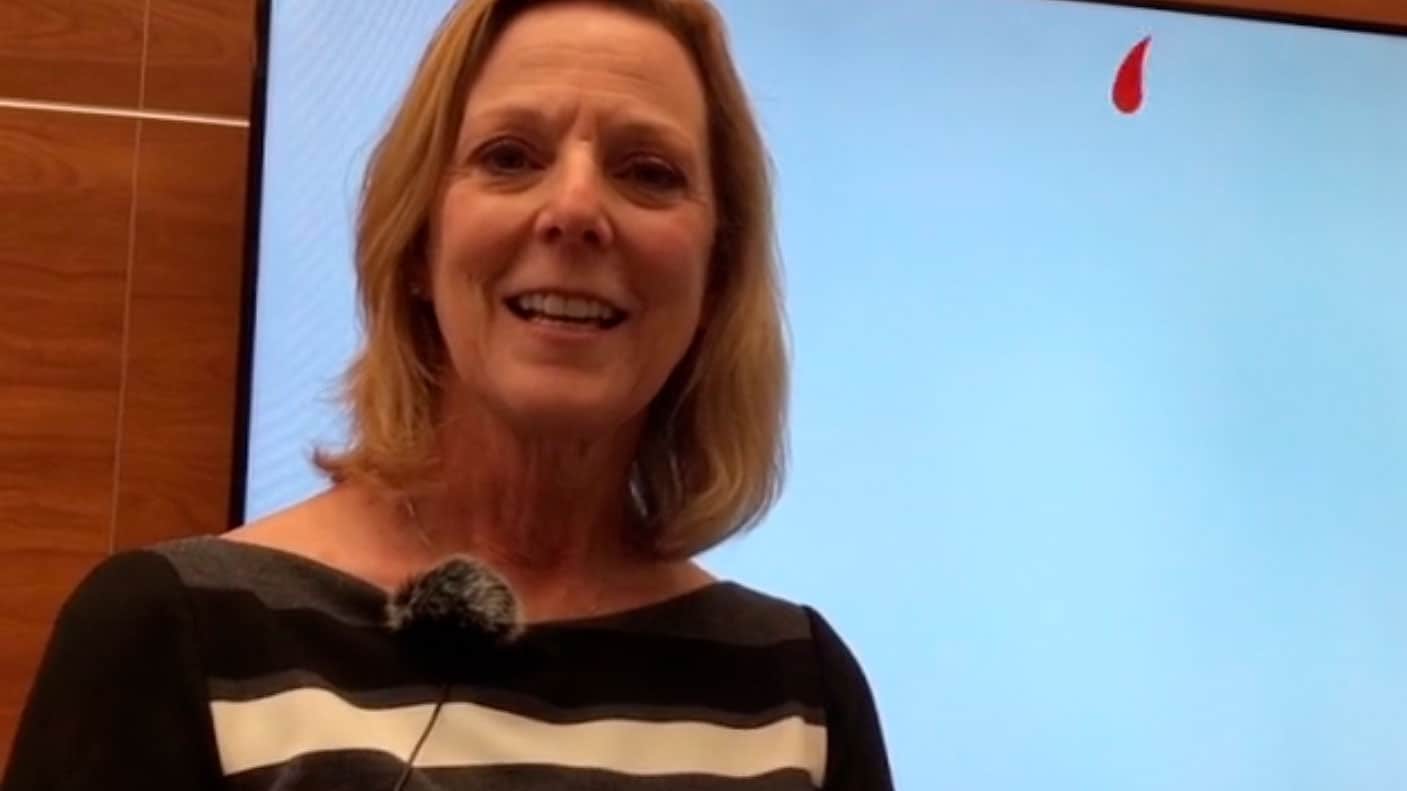

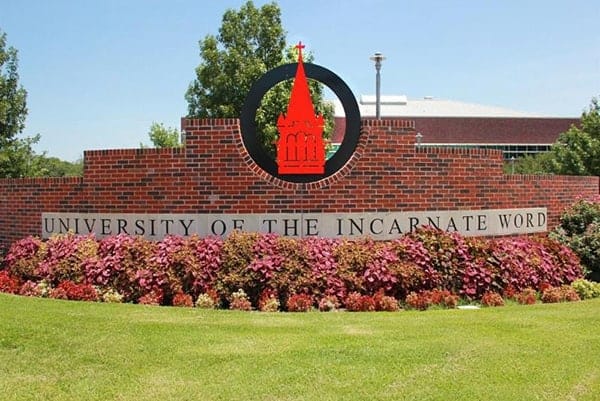
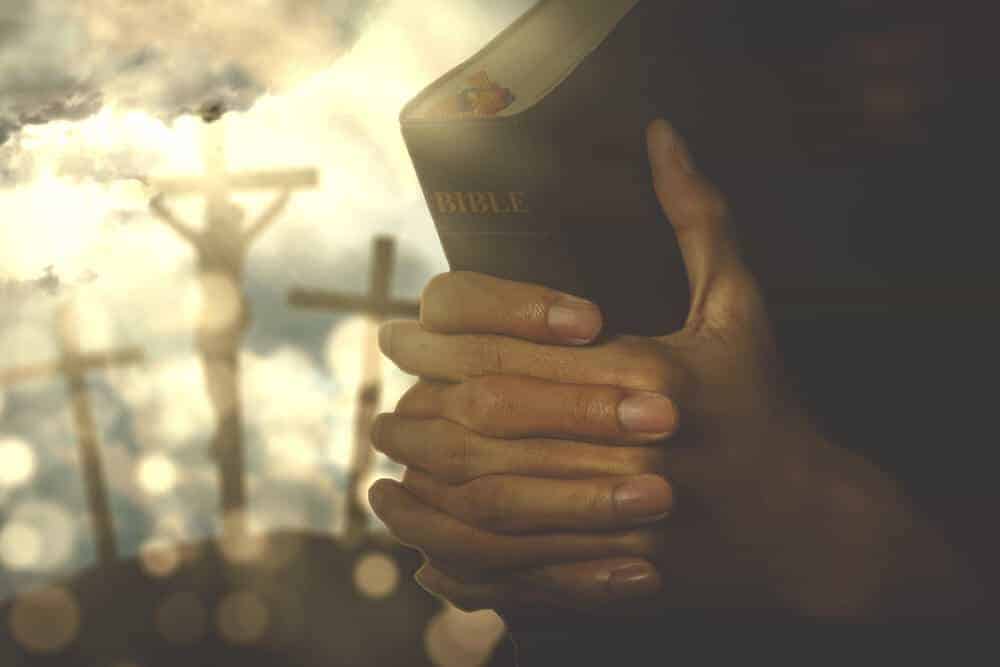
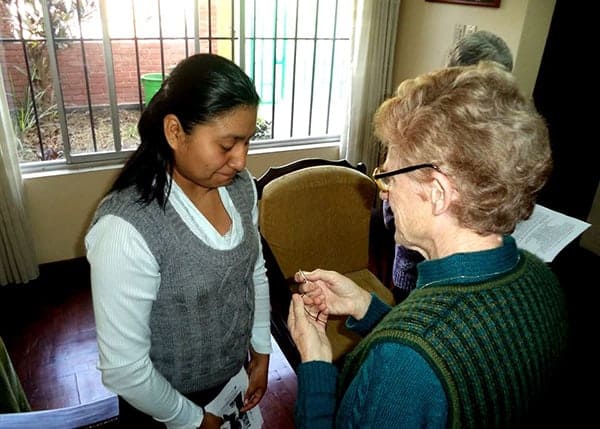


0 Comments